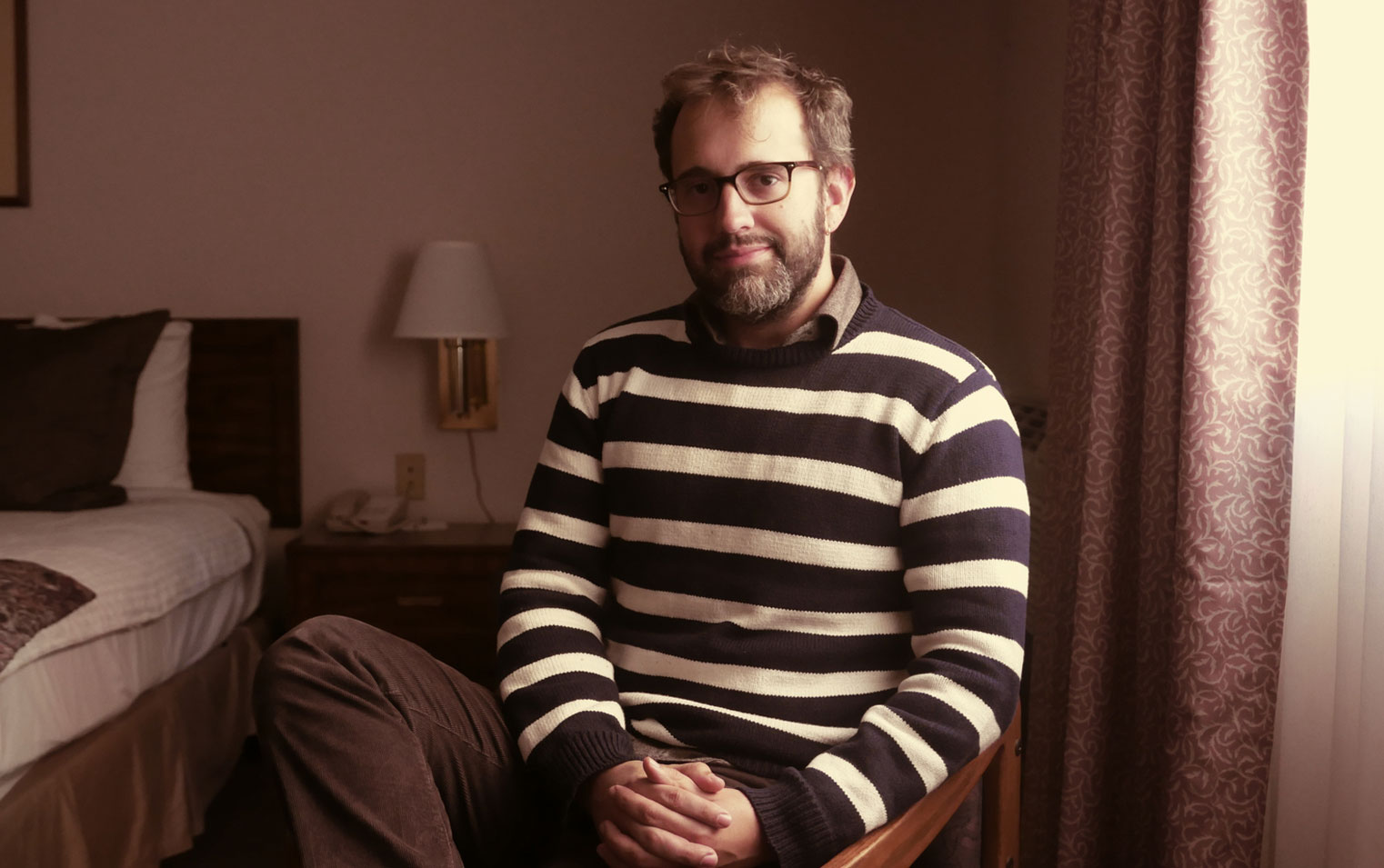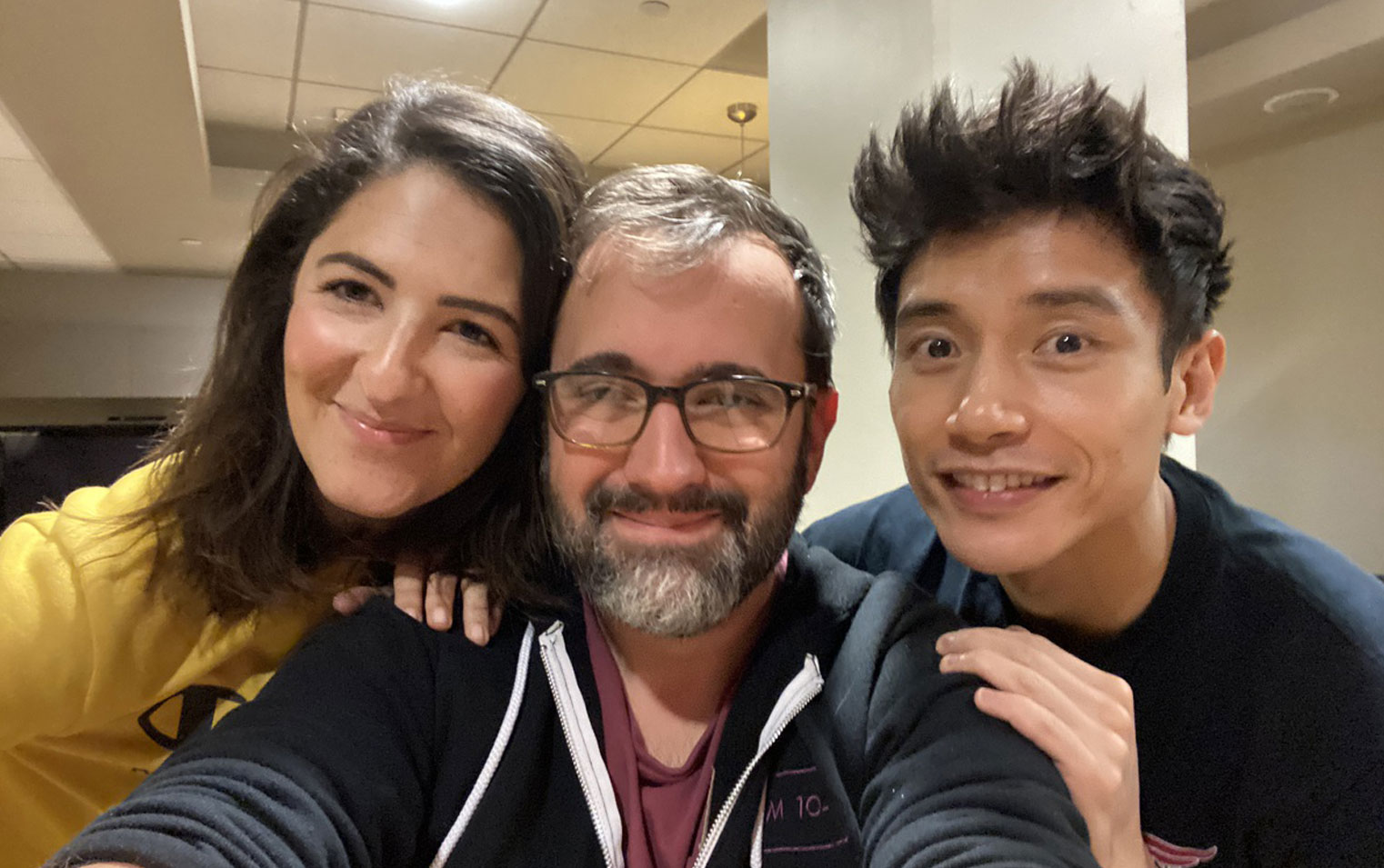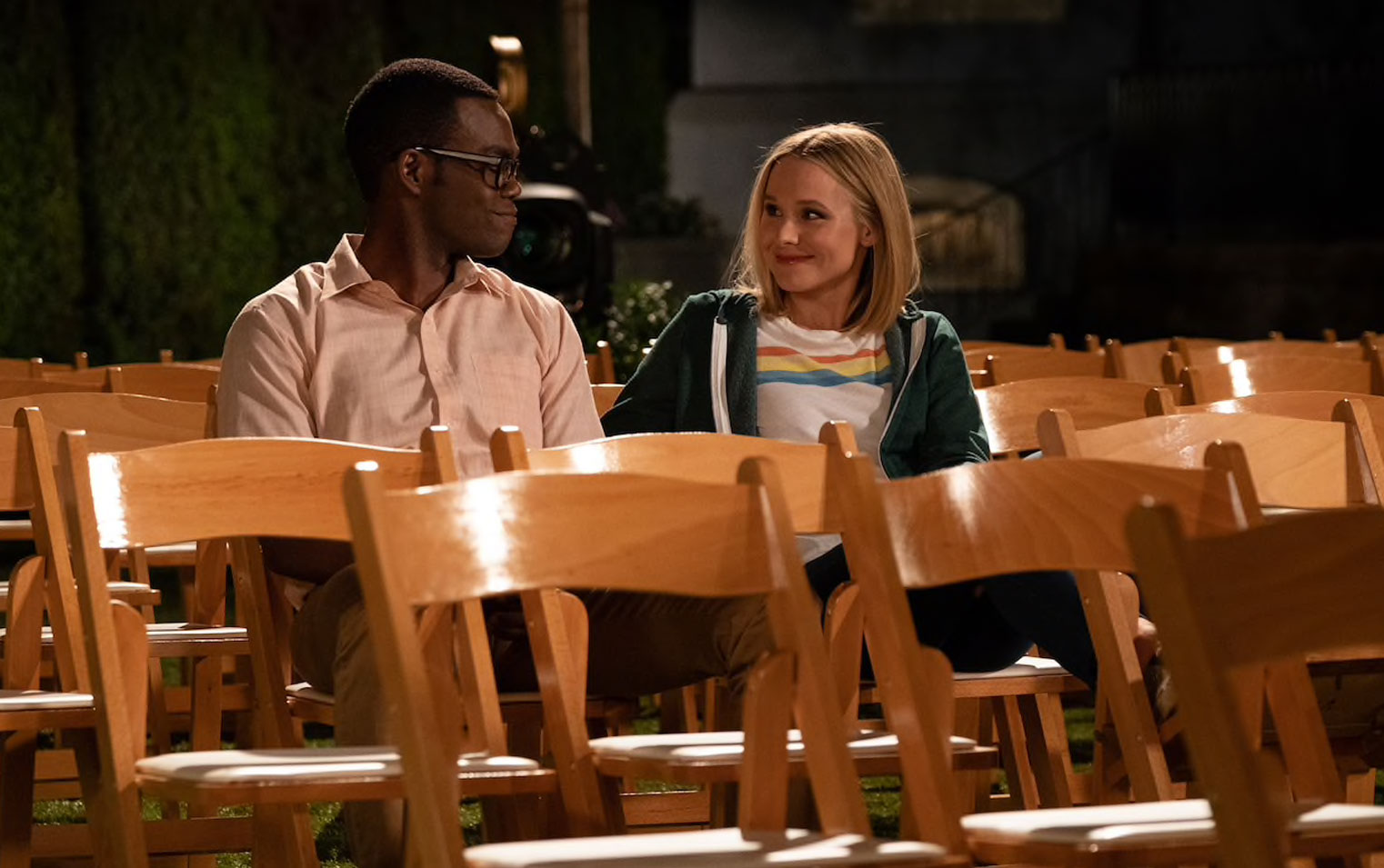
Eric Kissack manufactures luck. Throughout his career as an editor and increasingly as a director, he’s had the savvy and hustle to be in the right place and time for “luck” to kick in. He’s gone from cutting comedy shorts to major studio releases and to directing hugely successful shorts and national commercials, as well as editing prestige TV.
It’s the story of a guy who booked himself a first-class ticket on The Luck Train. It begins, fittingly, at a train station.
Get your ticket ready
From a young age, Kissack knew he wanted to be involved in film, and although he didn’t go to film school, he did complete a semester abroad at a film program in Czechoslovakia. There, he wrote and directed a film set in Prague’s open-air train station in the dead of winter.
“I wound up getting really sick. I barely made it through the shoot and then went straight to bed for, like, two days,” he recalls. “As I was recovering, I made my way to the edit room. I think because I was still healing or getting better, it was just like this warm, calm place with none of the insanity of being on set. A place where you could really think and be ruminative about creative choices. That made me think maybe editing is where I belong.”
When he returned home to New York, he taught himself Final Cut Pro 1.0. He bounced around, offering his services wherever he could — short films, comedy videos, and the like. His first steady gig was cutting corporate videos whose talking heads were . . . less than stellar.
“[The edit room] . . . was just like this warm, calm place with none of the insanity of being on set.”
“They were such bad actors,” he says. “I was cutting around a lot of their weird verbal tics. I wound up getting very fast and very good at dialogue editing. And when I started editing narrative, a lot of times I’d be working with directors, and they’d be, like, ‘Oh, we can’t use that take because he paused there,’ and I’m, like, ‘Don’t worry. I can get rid of that.’”
There were only so many verbal tics and bad acting he could take. Kissack began asking around for the most connected editor in New York, and a friend put him in touch with Alan Oxman, Todd Solondz’s editor. It was time to spin straw into gold.
A special alchemy
Kissack hit it off with Oxman and came on as his assistant editor, a position where many typically spend years learning the ropes.
Not Kissack. “I was Alan’s assistant for a couple of months and then lucked into some work of my own,” he says. “Alan was probably my only real editing mentor.”
The work he fell into was The Daily Show. The Republican National Convention was underway, and the Comedy Central team was slammed. They needed an Avid editor fast, but Kissack had never used the software. He spent the weekend devouring an Avid training manual and went in for his first edit session with a Daily Show producer.
As any Avid user knows, it’s not the most intuitive program. Throughout the producer’s session, when requests Kissack couldn’t field came up, he’d run to the bathroom to consult his manual. When the producer eventually questioned the frequent toilet breaks, Kissack played it off as food poisoning. His “fake it till you make it” ploy paid off.
“. . . when something is made for everyone, it can feel nonspecific and watered down.”
That work at Comedy Central led Kissack to one of his most influential professional partnerships: David Wain. Kissack, a big fan of Wain’s work on The State, leapt at the chance to edit for Stella, which Wain was developing for the network. Kissack got an editing gig on the show, then went on to edit Wain’s indie feature, The Ten, and Wainy Days.
Remembering his time with Wain, Kissack says, “The most valuable thing I learned was the value of having a voice. David has such a specific comic voice. I remember, when we first started working together, always being a little bit afraid of things that were too weird or only David and a couple of his friends would get. And he taught me, that’s actually valuable because, when something is made for everyone, it can feel nonspecific and watered down. But when something is specific and comes from a distinct voice, people really glom onto it.”
The siren call of Hollywood
When Wain became director for Universal Pictures’ Role Models , Kissack moved to Los Angeles to cut the film, his first studio feature. Its success brought him to the attention of Sasha Baron Cohen for whom he’d edit Bruno — with 850+ hours of footage — and The Dictator. A string of successful comedies followed, including Horrible Bosses 2 and Daddy’s Home.
As a young man obsessed with films, Kissack had imagined directors as superhuman. They were all Scorseses or Coppolas. Editing seemed like something mortals could achieve, one reason he gravitated to the position. Working with the talented crew behind big-budget comedies humanized Kissack’s idea of what a director could be. He saw first-hand how they used their smarts to construct a scene, what worked for them and what didn’t. In fact, given how rarely directors visit each other’s sets, editors have perhaps the best opportunity of any crew member to learn about the director’s craft.
Miguel Arteta, director of Cedar Rapids, encouraged Kissack to pursue directing. If you want to be a director, direct, he advised. But, in Hollywood, changing how you’re viewed can be challenging. Kissack was seen as a comedy editor; if he wanted to convince folks that he could direct, he’d have to show them. The best way to do that was to make a fantastic short film featuring a big-name actor . . . right?
Guns a-blazin’
At the time, Kissack was making good money at Media Arts Lab, Apple’s in-house advertising agency, but it was professionally unsatisfying. He collaborated with coworker and writer Kevin Tenglin to develop The Gunfighter, a short comedy about a saloon full of Old West stock characters. An omniscient narrator bent on inciting a bloodbath sets them against one another — it’s a funny, surprising, and highly produced tour de force. Definitely watch it.
Self-financed and shot over a weekend, it was a difficult production — limited shoot time; many, many speaking parts; a highly cinematic aesthetic. Kissack leaned on his experience as an editor to get through it: “The best way that editing skills helped me is when you get into a jam. ‘We’re not gonna be able to get this shot. What do we do?’ In my head, I can [think], ‘As long as we have this shot and this shot, we should be okay. Or no, we absolutely need this shot.’ So it’s kind of like on-the-fly rearrangement, which happens on every shoot.”
Kissack wanted to approach top talent for the role of the narrator, but because he wasn’t an established director, the film had to be the selling point, not him. So, with a nearly complete version of the short in hand, he approached Nick Offerman to see if he’d agree to a ninety-minute VO session. Offerman said yes.
The film received tremendous acclaim, including a Vimeo Staff Pick, Best Short at the Los Angeles Film Festival, and a spot in Saatchi and Saatchi’s New Director’s Showcase.
The hard sell of commercials
Riding the wave of interest generated by The Gunfighter, Kissack began working as a commercial director. He landed national spots for Lactaid and Toyota, among other projects, but the ecosystem for directing commercials has drawbacks. Every prospective project requires an extensive treatment and pits several directors against each other. Even when a pitch succeeds, the director can influence the final product only so much.
“I directed commercials off and on for about a year and found it just wasn’t really for me,” Kissack says. “I wasn’t making anything I was particularly proud of. Part of that was being separated from the editing process.”
The world of feature films was equally fraught. “The feature [directing] lone wolf/genius kinda character didn’t fit me very well,” he says. “I would go into the meetings, and I could tell they were all looking for the next Tarantino or Judd Apatow or something. I just didn’t take to it.”
Every career is a mix of luck and intent, and while Kissack’s luck was holding, his intention was morphing. With two young children at home, the idea of chasing jobs directing features in a time when fewer movies are being made felt like trying to win the lottery. There’s no clear path from editing films to directing them, but that’s not the case in television.
“When I was deciding that the commercial world was not for me, I thought of everyone that I knew who worked in television and who I wanted to work with. One of the first people I thought of was David Mandel, a writer on The Dictator,” Kissack remembers. “We had worked in a couple of other things together, but he was now running Veep. I give him a call. I said, ‘You know, I’m looking to get back into television.’”
His timing couldn’t have been better — Mandel happened to be searching for an editor. “Through David, I met the producer, Morgan Sackett, who was producing Veep and was about to start a new TV show called The Good Place,” says Kissack.
The Good Place lives up to its name
Editing for television fits Kissack perfectly. Better hours and built-in schedule breaks are right for his home life, while the extended collaborative nature of production suits him as a creator. Prestige TV ain’t bad; The Good Place has been dreamy, in fact. “It’s pretty luxurious. It feels like a couple of friends hanging out,” Kissack says. “We’re never here past 7:00 p.m. And part of that is the kind of shorthand we’ve worked out, but part of it is [that] Mike [Schur, showrunner,] is decisive. There’s not a lot of obsessing over the material, which is really wonderful and refreshing.”

The Good Place actors D’Arcy Carden and Manny Jacinto in a candid selfie with Kissack.
That decisiveness is necessary — modern television comedies are written long on the assumption that 25 to 30 percent of the material won’t land. Kissack explained, “They would never air if we put everything in. You take out the jokes that are less successful, and sometimes you take out good jokes that you liked because you have to get it down to 21 minutes and 30 seconds for network.”
Once he’s down to the best-of-the-best jokes and the episode is still running over, additional trimming becomes a matter of hunting for frames to excise. “And that’s where a lot of my early corporate video skills come into play,” he says. “I’m, like, ‘He stretches out the ‘s’ in that word. I can take two frames out of the middle of it.’”
The process of editing an episode begins during shooting. His assistant remotely syncs the previous day’s material overnight, and Kissack begins his cut the following day. He approaches the material with an emphasis on the actor’s delivery.
“I’ll do an audio edit,” Kissack says. “I’ll pick the audio takes that I like and throw them together. I’ll put two pieces of audio together that I know can’t work visually. I’ll figure out something later. A lot of my polishing is going back and figuring out if I can make this audio work with some cutaways here, or is that going to be crazy?”
After Kissack completes his editor’s cut (at a pace he describes as “frenzied”), he spends a week with the director, then it’s time to sit with Mike Schur for the producer’s cut. “And the pace of that is pretty different,” he says. “Because after four years, we work really well together. It doesn’t take us long to get the episode down to time and get it to the shape that you want. So we’ll stop and talk. We’ll show each other funny Internet videos, and we’ll work for a while.”
Kissack’s work on “Pandemonium,” season three’s finale, garnered him an Eddie Award nomination from American Cinema Editors. In the episode, Eleanor and Chidi, who’ve fallen in love numerous times only to have their memories erased, are given the task of saving four souls. If they fail, then all souls will go to The Bad Place forever. Unfortunately, Chidi’s ex-girlfriend is one of the souls that must be saved. He volunteers to have his memory erased, lest his memories of his ex interfere with their work. Before the erasure, he and Eleanor have a heartfelt parting.

Chidi (William Jackson Harper) and Eleanor (Kristen Bell) share a tender moment in “Pandemonium,” the finale of season three of The Good Place. Credit: Colleen Hayes / NBC
The episode recognizes that a joke doesn’t exist in a vacuum — the best come from character and situation. Characters have to be believable. Situations have to be believable. The story needs to engage; the emotions ring true. On top of that, the jokes gotta slay. “Pandemonium” spent longer developing character and emotion rather than always going for humor — a risky move for a half-hour comedy.
“That’s one of the things that felt like a gamble. When we were making that episode, it was sort of, like, ‘Oh my God, are people gonna hate us?’ But it seemed to be fairly well-received. That felt good. We took a risk, and it paid off,” Kissack says.
Risks & rewards
It’s not the only risk that’s paid off. The move to television editing has also allowed Kissack to showcase his directing chops on a six-episode web series — The Good Place: The Selection — that connects the show’s third and fourth seasons.
But with The Good Place ending after season four, Kissack sees a mix of editing and directing television in his future. His reputation as an editor allows him to negotiate for directing a few episodes per season of whatever show he signs on to edit. “Hopefully, in a couple of years, it’ll be I’m appreciated enough as a director that I don’t need to edit,” he says.
Film and television is a tough racket, no matter how you slice it. Years of work go into manufacturing the “luck” that boosts you from one career rung to the next, but the process offers other rewards too.
“I probably like being done [the best], and that’s not because I don’t enjoy the process, but because when you look back on something — usually it’s that final mix where you see it all put together. You see the VFX and the color, and you think about all the work that went into it. It feels good to watch it and feel like, yeah, I did that,” Kissack says. “I helped to make this thing, and that feels good. That feeling will never get old.”






